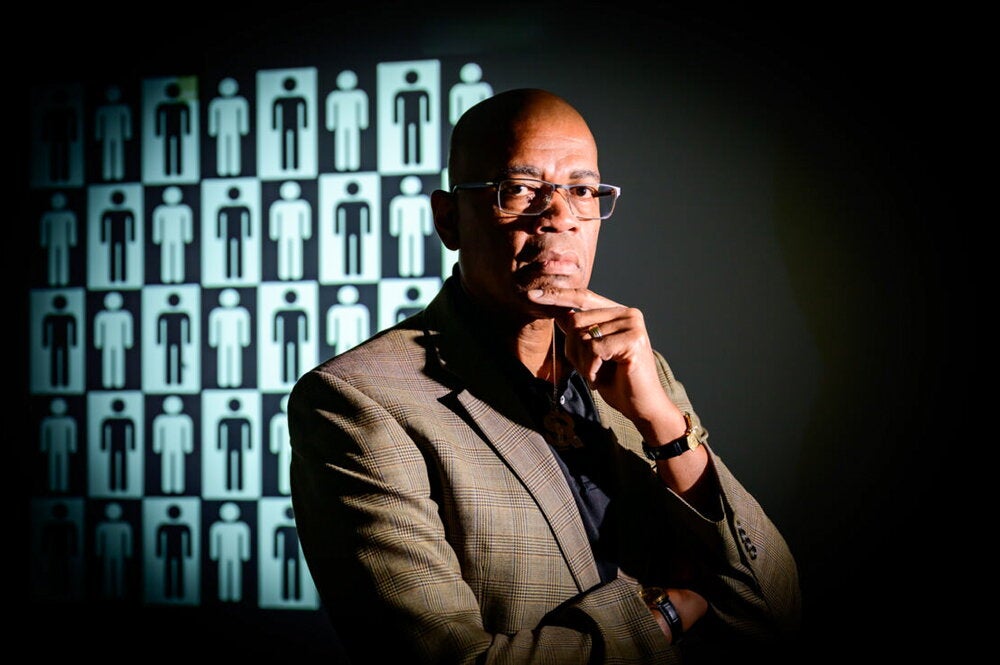

A leaked U.S. Supreme court draft opinion suggests that the court is on the verge of overturning the landmark Roe v. Wade case and allowing states to more heavily regulate abortion. Cynthia Buckley, a demographer and professor of sociology at U of I who has studied and written about abortion, recently answered questions from the College of LAS.
What has been the result in other countries when abortion rights are overturned?
Generally, over recent decades the dominant global trend has been towards increasing access to abortion and expanding reproductive health initiatives. In 2021, courts in Mexico held that punishments for abortion were unconstitutional. Ireland legalized abortion by referendum in 2018 and in South Korea, where abortion had been illegal since 1953, courts decriminalized early term abortions on January 1, 2021.
Over the past few years, several countries have moved to restrict access to abortion, with varying levels of success. Even China, of the notorious one-child policy, has recently explored restrictions on abortion access as a response to the failed two-child program to raise birth rates. Challenged with declining fertility, leaders in Poland and Hungary embraced nationalist rhetorical campaigns focused on viewing abortion as a threat to the protection the national future and their individual cultures. In Poland, the Women’s Strike in 2016 in response to moves towards an abortion ban, was successful in demonstrating widespread opposition, only to have access cut drastically by its Constitutional Tribunal in 2020, a move prompting numerous cases of rights abuse to be submitted to the International Criminal Court. Hungary, ranked as the worst country for women to live in the European Union, recently reelected Victor Orban, a consistent opponent of abortion and sponsor of the Geneva Consensus Declaration (GCD), a document calling for the refusal to finance or facilitate abortion. Brazil, a country criminalizing abortion in most cases, is a signatory and supporter of the GCD, with women who are able often traveling to nearby countries to obtain procedures.
These cases inform possible impacts for the U.S., including contradictions between national and state laws, women (who are able) forced to travel across borders to obtain legal abortions, and widespread protests and potential strikes. Particularly concerning are potential increases in maternal mortality and infant mortality, which were dramatic in the case of Romania when abortion was outlawed (along with contraception) suddenly in 1964 after years of legalized abortion.
What are some new long-term issues or debates that may arise if Roe v. Wade is overturned?
Ideally, the disagreements, fears, and debates concerning abortion should push the U.S. to engage in a more serious consideration of comprehensive and medically informed sex education as a core element of public-school education. Comprehensive, medically informed, sex education is effective in decreasing the demand for abortion (in addition to increasing the age at sexual debut and increasing the use of contraception when individuals become sexually active. Abstinence only programs are not effective. Presently, only 16 states mandate medically accurate sex (and HIV) education, including Tennessee which only requires classes for counties with high teen pregnancy rates (19.5 per 1000 women aged 15-17). Regardless of attitudes towards Roe v. Wade, the failure of advocating for comprehensive, medically informed, sex education in the U.S. not only increases the probability of unwanted pregnancies and therein the demand for abortion, but also leaves people poorly informed of safe and healthy sexual and reproductive health behaviors. Illinois is among those states mandating comprehensive sex education. We need to come together to agree upon more sustained efforts to ensure high quality and detailed curricula, widespread national adoption of such courses, and broad access to a variety of contraceptive options.
Secondly, an open and transparent discussion of the surveillance systems and punishment mechanisms associated with the numerous trigger laws that will be enacted if Roe v. Wade is overturned is critical. What types of monitoring and enforcement, for individuals, couples, and healthcare providers, are in keeping with our national norms and values? The recent approach employed by the state of Texas turning enforcement over to fellow citizens has drawn broad ire, perhaps for good reason. Louisiana’s recent moves to cast abortion as homicide carries serious implications concerning punishment. In both cases, open and transparent discussion and debate are needed and should begin prior to the receipt of the final Supreme Court opinion.
Lastly, the debate over access to legal abortion demands cogent and evidence informed discussions of the effects of earlier restrictions on equity at home, and our international standing abroad. The Hyde Amendment (originally passed in 1976) sought to prevent federal dollars from being used for abortion services. Careful examination of which social groups were most affected by this policy is important for understanding the potentially disproportionate impact of altering abortion access on American women and inform the generation of policies to mediate anticipated inequity. American global health diplomacy efforts were hindered by the Helms Amendment (established in 1973) and the related “global gag rule” on abortion. Preventing U.S. international aid from being associated with the provision of or advocacy for abortion limited the U.S President’s Emergency Plan for AIDS Relief (established in 2003) and distanced the U.S. from the core health and development activities of many international organizations.
How have women responded when new restrictions on abortion are put in place?
In Illinois, we know that when neighboring states restrict access to abortion the number of procedures performed on out of state women in Illinois increase. Women who have the resources to do so will travel to obtain care, even at great cost. Other will pursue illegal abortions, often at great risk. While illegal in most cases, health scholars estimate that 1-4 million abortions are provided in Brazil per year, generating approximately 250,000 emergency room visits relating to these procedures.
In recent memory, the Romanian experience with abortion and contraceptive restriction is informative and important. The sudden closure of abortion clinics and the draconian simultaneous ban on contraceptives in October 1964 led to a short spike in the number of births, fulfilling then President Ceaușescu’s pronatalism goals. However, as the Romanian population adopted to restrictions, returned to traditional contraceptive practices (often at high personal inconvenience), and established networks and practices for illegal abortions, the birth rate fell back to earlier levels. Markedly high levels of maternal mortality and infant mortality remained. Coupled with increasing economic deprivation, the abolition of abortion was associated with a marked rise in infants given to the state. The poor conditions in orphanages later captured international attention during the early years of the HIV/AIDS pandemic, as poor medical practices were linked to high infection rates. It is a tragic and cautionary tale.
Is the U.S. prepared to deal with significantly more cases of unwanted and unplanned births?
No, and this should be assessed carefully and planned for immediately. If additional resources are not provided to enable mothers or couples to keep the children born from unwanted pregnancies, the potential rise in the number of children available for adoption is likely to increase. Health and Human Services reports that in 2020 (despite COVID-19 challenges) 57,000 children were adopted in FY 2020. However, as of September of 2020 there were 117,470 awaiting adoption. Of the over 400,000 children in foster care, just 4 percent were living in “pre-adoptive” homes. While there has been a rise in the number of Illinois children in foster care, overall national numbers are declining, slightly. It is far from clear that capacity exists to effectively, efficiently, and compassionately deal with the care and placement of an increasing number of infants and children. Discussion over the criteria for care, financing, and administration of the care for more infants entering care facilities is desperately needed.


